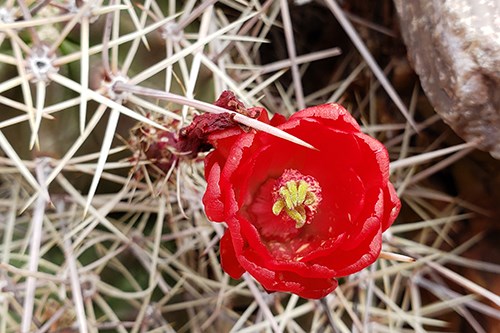
Claret-cup Hedgehog (Echinocereus triglochidiatus ssp. mojavensis) has cylindrical stems that form clumps. The scarlet trumpet-shaped blossoms can put on a spectacular show. Blooms May into June. 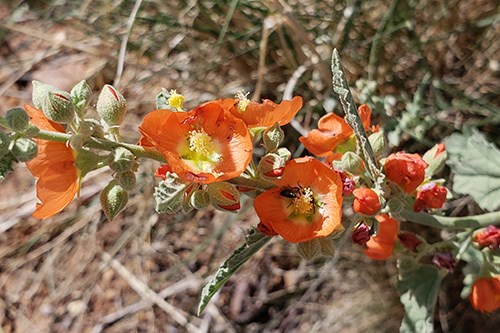
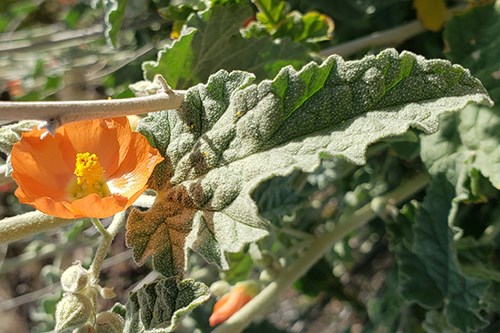
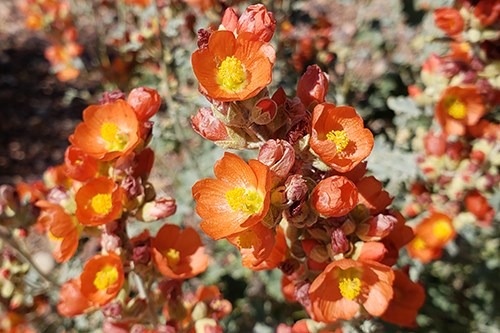
Small Leaf Globemallow (Sphaeralcea parvifolia) has downy, crumpled leaves with several lobes. The clusters of coral orange flowers lift above on nearly leafless (on the upper half) stems. The flowers have five petals and develop into wagon-wheel-shaped seedpods. 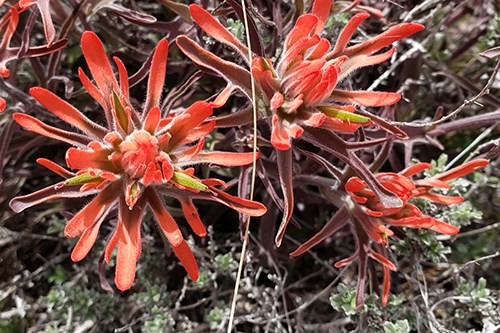
Desert Paintbrush (Castilleja chromosa) is a parasite on various shrubs and grasses, tapping into their roots with its own. The entire plant is hairy, including the often purple leaves. The bracts are intensely bright red, the actual flower an unobtrusive green tube. Blooms April through June. 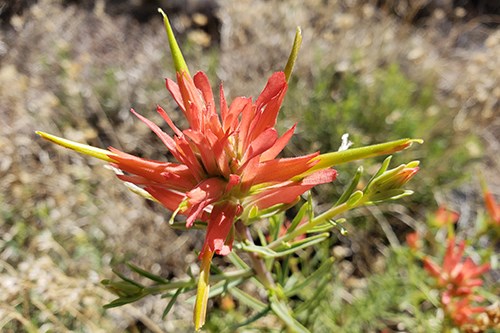
Narrowleaf Paintbrush (Castilleja linariifolia) is a hemiparasite with terminal bright red inflorescences from which green beak-like fused petals protrude. The alternate leaves are linear, curving, and alternate along the long stems. The whole plant has fine soft hairs. Blooms June through August. 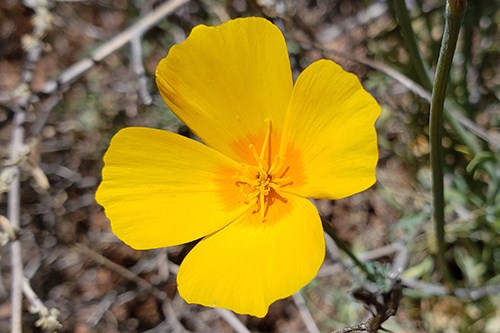
Mexican Gold Poppy (Eschscholzia californica ssp. mexicana) is not usually in this area. It may have traveled north with people. It is a native to Arizona. The bright orange four-petalled flowers are lifted on slender stems above a rosette of highly dissected leaves. Blooms April through September. 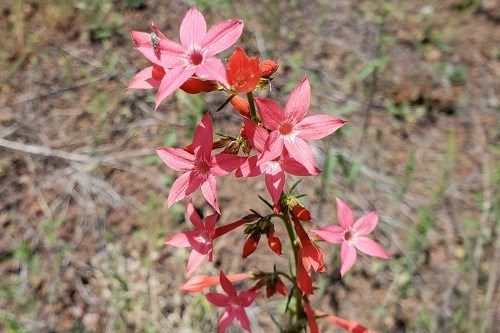
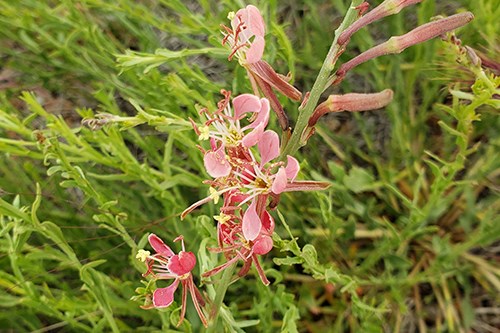
Scarlet Beeblossom (Oenothera suffrutescens) forms colonies of perennial herbs. The flowers start at night, the four spoon-shaped petals starting white turning to pink or even red the next day, each lasting less than twenty-four hours. 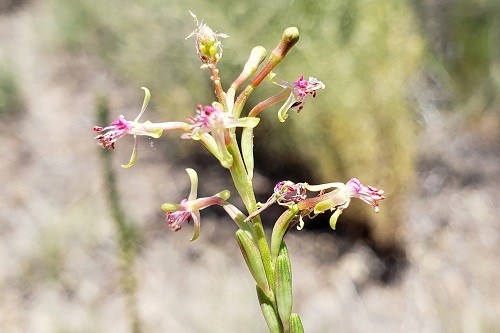
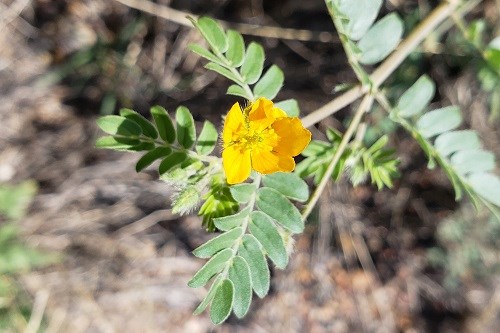
|
Last updated: February 4, 2023

